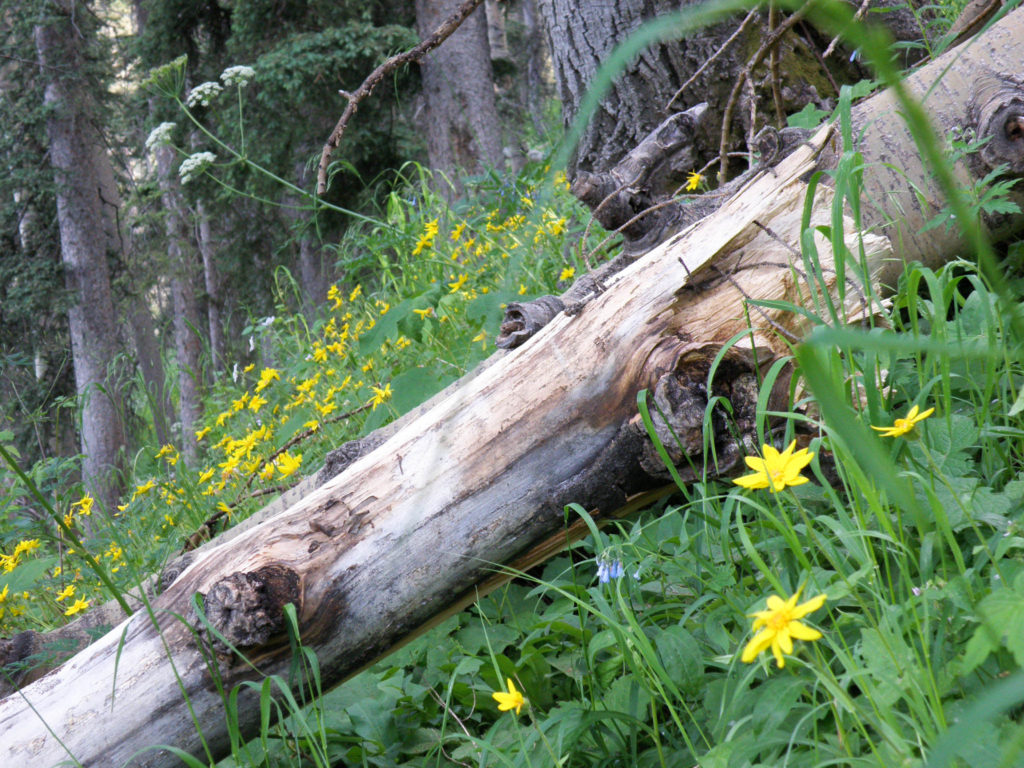
Arnica as a First Aid Medicine
Summary
- Arnica is an important first aid plant
- Its primary action is to reduce inflammation from injuries.
- Its main use is for soft tissue injuries such as sprains and strains.
- It is also used for bruising.
- It is mainly used externally as an oil, salve, cream, liniment, or tincture.
- It is also commonly used internally as a homeopathic remedy.
- The tincture can be used internally, though only in very small quantities.
- It helps reduce pain through its antiinflammatory action.
- It combines well with other antiinflammatory and pain-relieving herbs.
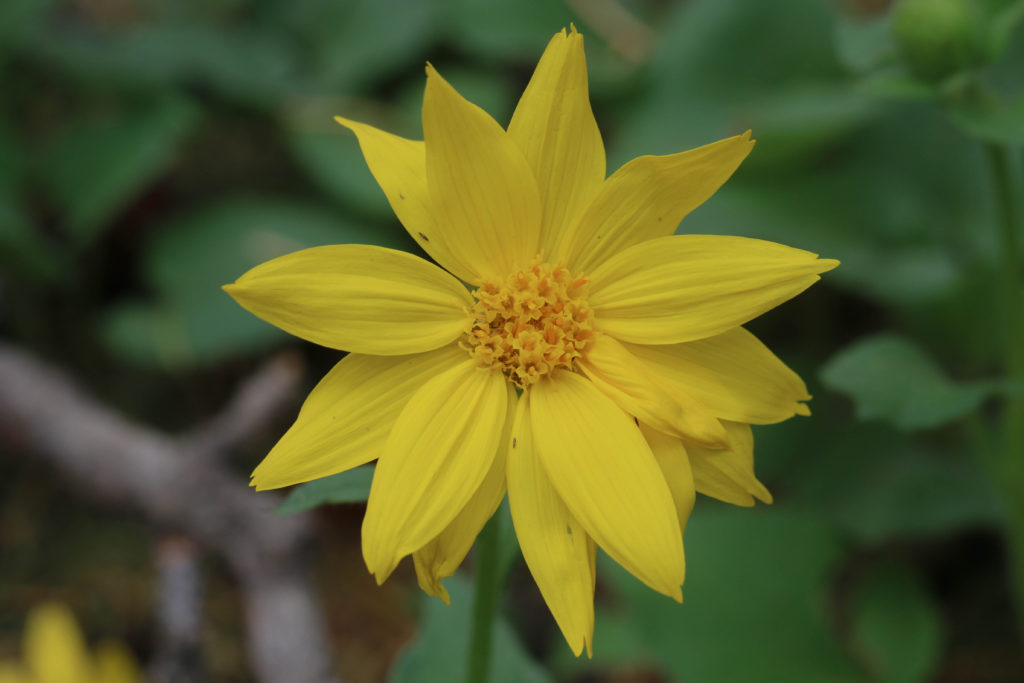
Botanical Information
Family-Asteraceae
Genus-Arnica
Species– Arnica montana is the most widely used species and is native to Europe. Native US species include Arnica cordifolia, A. latifolia, A. chamissonis, and A. mollis.
Species Notes
Many different species of Arnica are used for medicine. The two species I have worked the most with are A. cordifolia and A. latifolia, which are common in the US western mountain ranges.
Arnica is a large and complex genus. There are around 26 species in the US that often hybridize.
Common Name Notes
It is generally known as Arnica. It also has some older lesser used names as well as regional names.
A note on terminology
The flowerhead of Arnica (and most plants in the Asteraceae) is made up of many small flowers. The overall effect is that of one large flower. Since it is a group of flowers, rather than a single flower, it is botanically known as an inflorescence or, flower head.
I use the terms flower, flower head, and inflorescence interchangeably in this section.
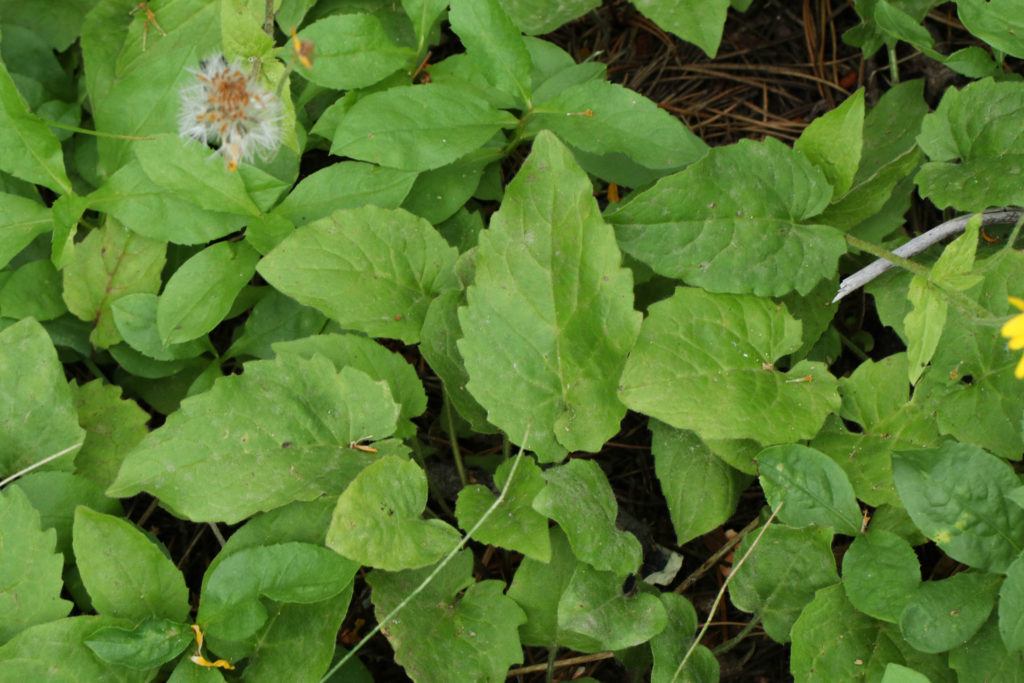
Plant Characteristics and Unusual Features
There are common characteristics of many Arnica species, though there are exceptions, as with any large genera of plants.
Arnica has the classic ‘sunflower look’ with yellow ray and disc flowers. Most Arnica species are herbaceous, rhizomatous perennials and generally grow in small to large stands in the western mountain ranges.
The opposite, simple leaves are a distinguishing feature of many Arnica species. The plants are usually hairy and generally have one flower head per stem.
When Arnica goes to seed, they have the typical parachute fluff (pappus) like a Dandelion. Some Arnica species also hybridize and form complexes. For instance, A. cordifolia and A. latifolia often have intermediate species that are called the A. cordifolia/A. latifolia complex.
Many of the Arnica species have a distinctive smell when bruised. It is difficult to describe (as so many aromas are), but it is a bit musky. Personally, I like it. It reminds me of summer alpine meadows.

Habitat
I commonly see Arnica species growing in middle to high elevations in all the western US mountain ranges. I have not seen any species growing in the eastern states, though there is one listed in the US plant flora.
History
Arnica has a long history of use for injuries wherever it grows. It has a long history of use by Native Americans. Many of the ways it is currently employed are derived from European traditions, where it is still commonly used. Our current usage is very similar to its historical use for injuries. Arnica has historically and traditionally been used for many other health conditions, but currently it is mostly used as an antiinflammatory.
Related Plants
Arnica is the common name of many plants that are not in the genus Arnica. Most of these are also in the Asteraceae (Sunflower family). Many of these are also used as antiinflammatories. This section focuses on plants in the Arnica genus.
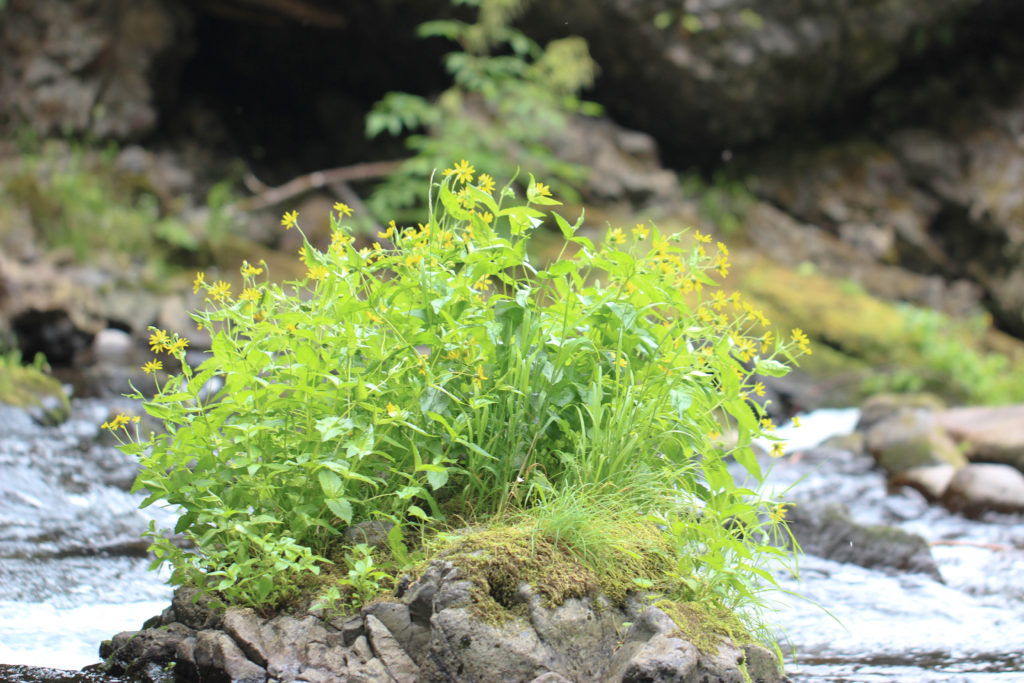
Medicinal Plant Part(s)
The inflorescence is the main part of the plant used for medicine. This is the flower head and all the surrounding structures, including the involucre. I have heard of folks using the whole plant and also the root, though these parts seem less commonly utilized. I mainly use the flower head, which is also the part sold in commerce.
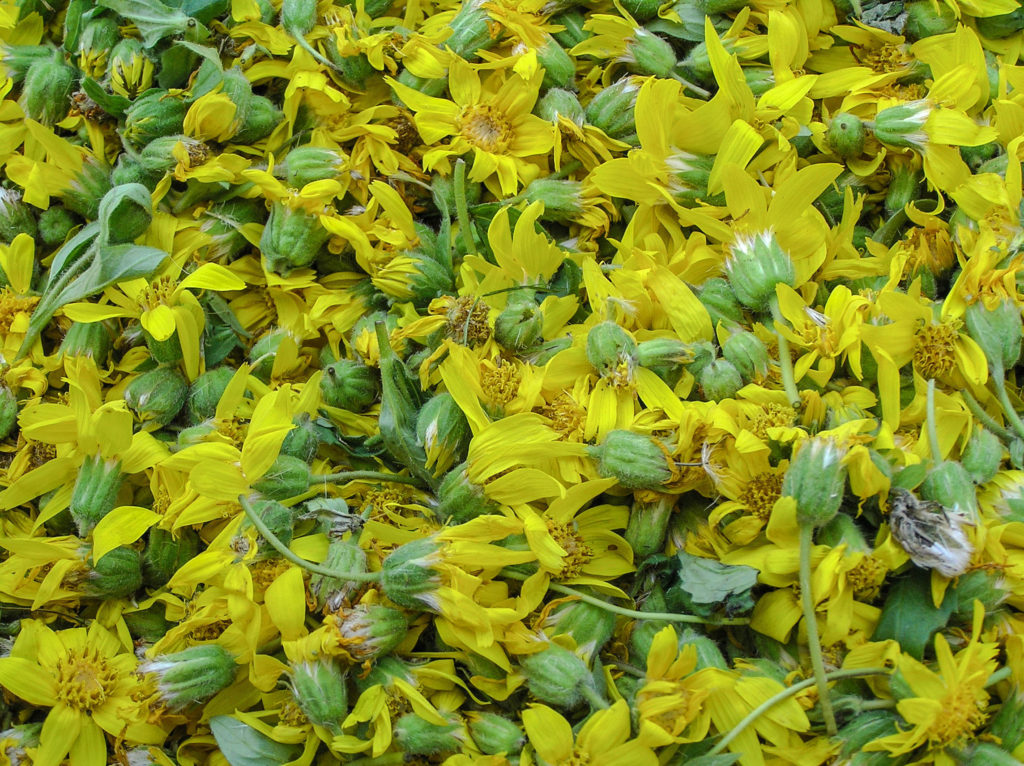
Wildcrafting/Ecology
Arnica is a common plant of the US western mountain ranges, especially A. cordifolia and A. latifolia. These are the two species I usually gather due to their frequency and large growing region.
Neither of these is endangered, but care should be taken when gathering them. They are an important part of their environmental landscapes, just as all native plants are.
The inflorescences are the part that is wildcrafted, and if gathered properly, the rest of the plants should flourish. To keep the plant communities healthy, do not go back to the same area for some years after wildcrafting. Find isolated places to gather so that there is less chance of other wildcrafters gathering there. Also, it is a good general rule to not gather more than a third of the flower heads, so that they can go to seed.
Keeping all of this in mind, Arnica is a plant, which can be collected for personal use and not alter the environment.
To gather Arnica, I start by driving along the smaller dirt roads generally heading ever upward in altitude. When I see the first patch of Arnica, I stop and botanize it to make sure it is one of the more common species. After ascertaining the species, I continue driving to make sure there are plentiful local patches of the plants.
After finding an area with abundant patches, I usually set up camp as I may be there for a day or two.
To gather the plant, I either use a 5-gallon bucket or a paper bag with the top rolled down to stabilize the bag so it can stand upright.
I then knee-crawl through the patches picking the buds and recently opened flower heads. These usually stand about 1 foot from the ground. I avoid the inflorescences that have already gone to seed.
I alternate between pinching off the flower heads with my fingers and using pruners. I make this gathering method switch to avoid over-tiring one part of my body. I also avoid rubbing my face during this time to prevent getting the rash described in the sections below.
It is easy to pull the whole plant up when gathering the flowers. Try to avoid this to prevent damaging the plant population. These plants spread under the soil by rhizomes so as long as you don’t damage too many plants by uprooting their rhizomes, the population should stay healthy and stable.
An important note about gathering Arnica, the flowerheads sometimes contain maggots. Yup, maggots. Now, in general, I don’t have anything against maggots, they are just the larval stage of flies. (Here’s a fact you didn’t need to hear, but according to a 2012 study, the population of maggots in N. America is more than 3×1017 or a bit less than a quintillion.) The problem is, I don’t want to make maggot medicine. And in some plant populations, most of the flowers may harbor these creatures. This entails the tedious task of pulling each of them out of the flowers. Fortunately, that does not happen in all patches. If you find yourself in that situation, I suggest repacking and finding a new place to pick Arnica.

Plant Processing
I do not dry Arnica flowers for later use. I like to use them before they go to seed. When they are dried, or in seed, they seem medicinally weaker compared to the fresh or wilted flower. However, I have not seen any studies confirming this. If I am making a tincture or liniment, I macerate the fresh flowers in the menstruum right away. When preparing an oil, I spread the flowers out on a tarp or other groundcover and wilt them. The amount of time they need depends on how hot and sunny it is. The hotter it is, the quicker they wilt. I want to remove about half of the water so that they don’t go rancid in the oil. They are ready when they are visibly wilted but have not yet gone to seed. One must hope for a lack of rain during this process.
I generally cover them at night to avoid dew settling on them. I remove the covering early in the morning to allow the accumulated moisture to evaporate.
A note about traveling with freshly made oils. At home, I do not put a lid on freshly prepared oils. Instead, I cover the top with a cloth. But this does not work when traveling, as it will spill over when you hit a bumpy patch of road. Instead, once a day, I open each bottle of oil and let it breathe. This allows some of the gases to escape (you can hear them make that woosh sound). After a few seconds, I close them again. This has made a big difference, and my Arnica oil does not usually spoil as I travel cross-country.
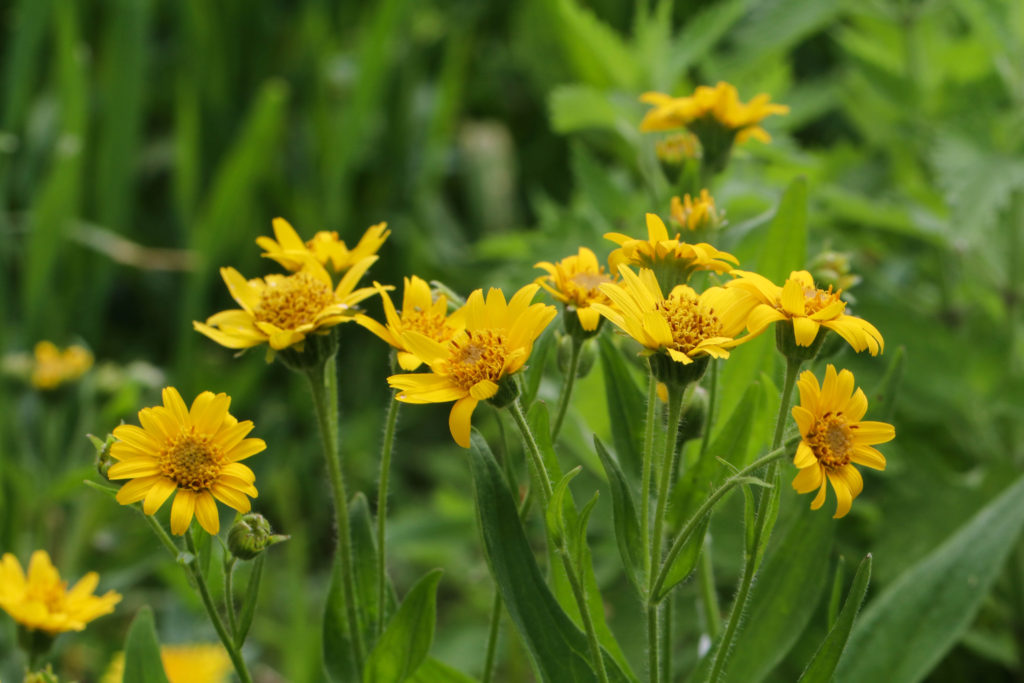
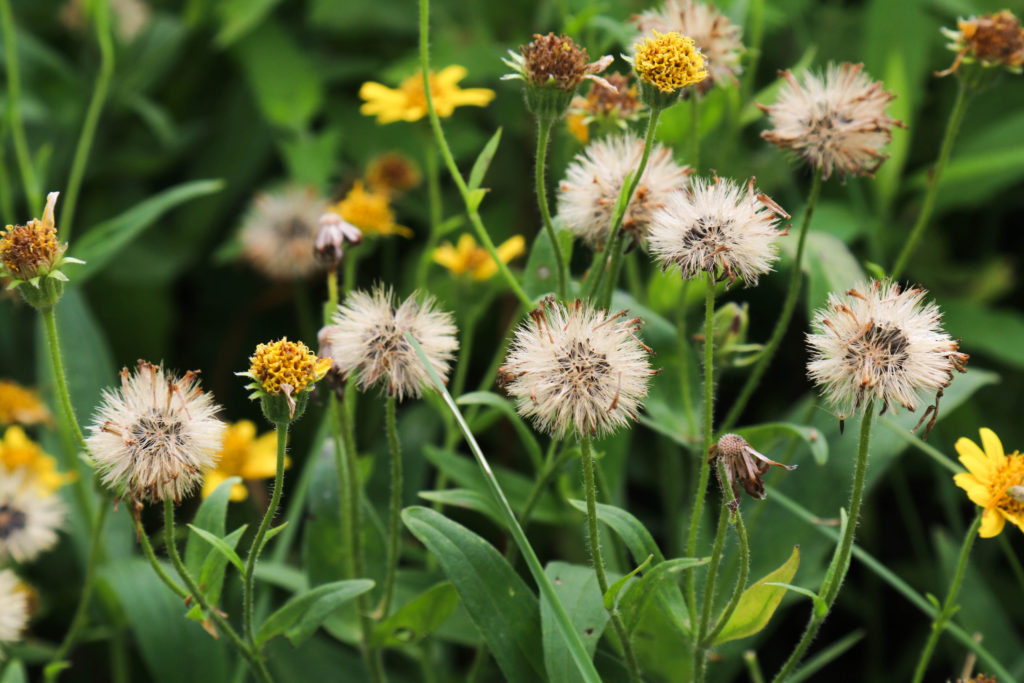
Cultivation
Almost all of the Arnica sold in commercial markets in the US is Arnica montana, the European species. This plant is cultivated in various countries.
The only species I’ve seen successfully grown in home gardens is Arnica chamissonis. I have a small patch growing in my Ithaca garden. Unfortunately, it is not enough to gather from (yet).
Notes on Purchasing
A lot of the Arnica flowers in the marketplace often appear to be of low quality. If you wanted to purchase Arnica flowers to make medicine, I suggest directly contacting an organic grower or a reliable wildcrafter.
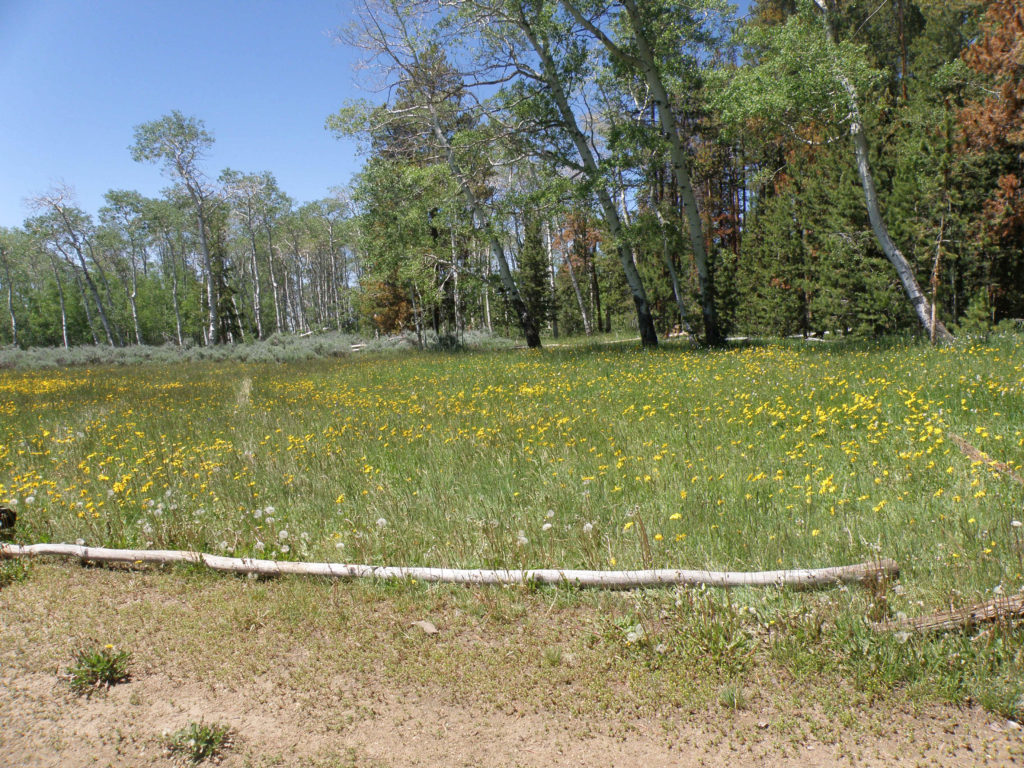
Medicinal Uses
- Acute inflammation
- Bruising
Medicinal Categories
- Antiinflammatory
- Pain Aid
- Vulnerary
Medicinal Preparations
- Liniment
- Oil
- Salve
- Tincture
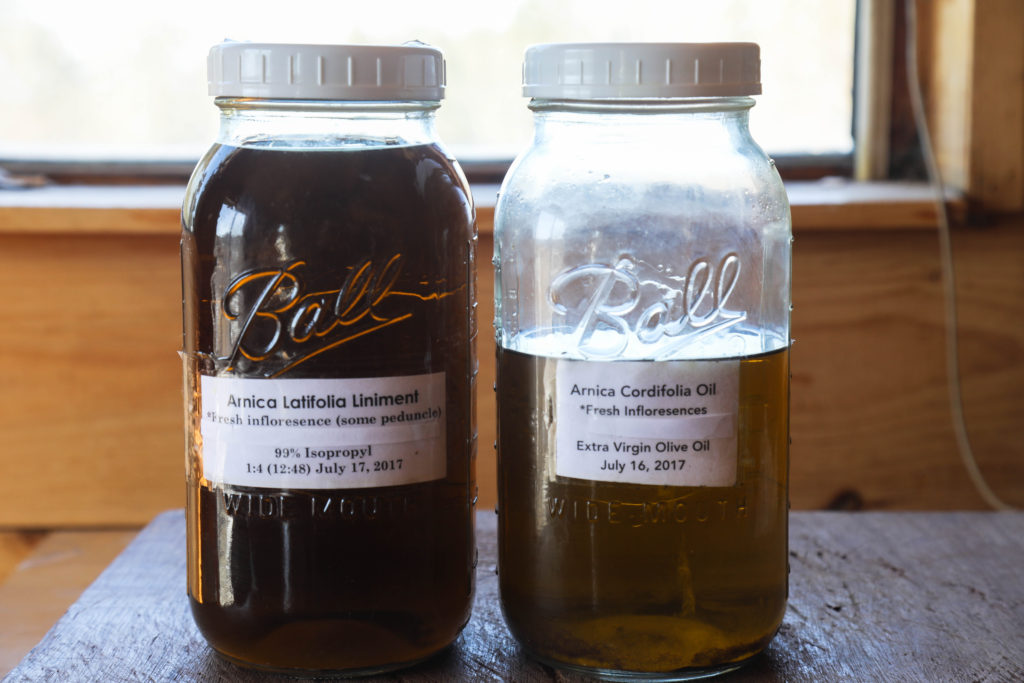
Main Medicinal Uses
Arnica is one of the most commonly used herbal first aid remedies. Its main application is as an antiinflammatory after an injury. It is also useful to reduce bruising. It is widely used in commercial oil-based applications, including salves, oils, ointments, and creams. It is commonly employed internally and externally as a homeopathic remedy (note-I do not use homeopathic remedies).
I mainly use Arnica for acute injuries, such as sprains, falls, and other injuries. It seems to work best when used as soon as possible after an accident. It may be beneficial for some time afterward, but I don’t find Arnica as effective for long-term injuries such as chronic back pain.
Arnica also helps with pain due to its antiinflammatory action. During the inflammatory process, blood vessels dilate bringing white blood cells into an injured area. The swelling puts pressure on the tissues, which creates pain. During inflammation, other inflammatory meditating hormones are released, which also increase pain signaling. By reducing these effects, Arnica can diminish pain.
It has wound healing (vulnerary) properties by reducing inflammation, thereby allowing the body to repair itself.
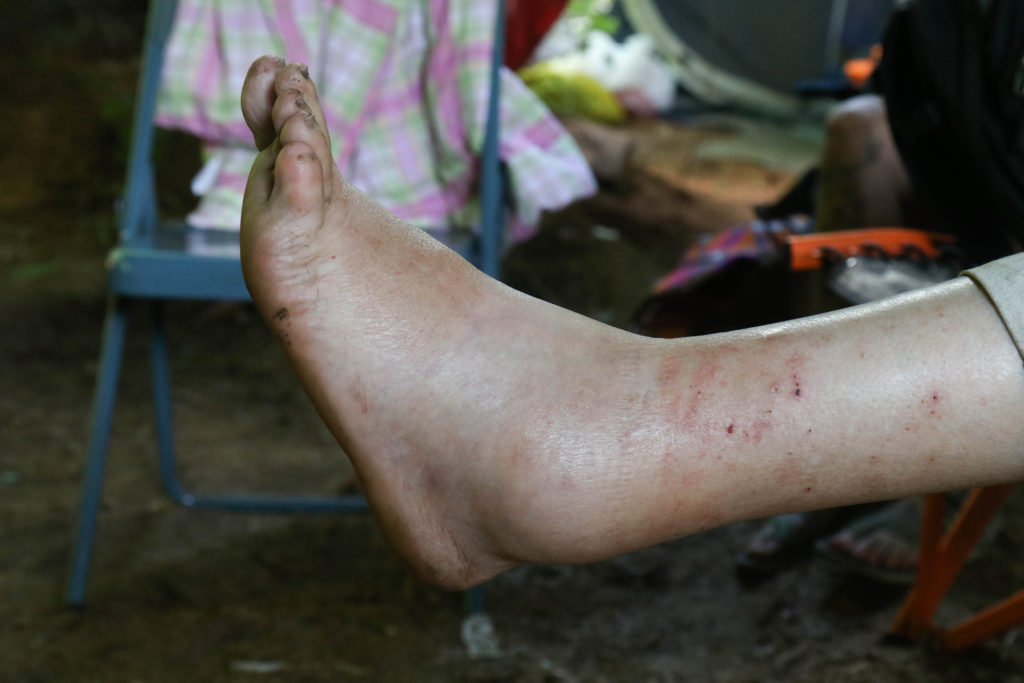
Specific Medicinal Preparations
These are the main Arnica preparations I use as medicine and the ways that I prepare them.
Liniment
Liniments are only used externally. The benefit of Arnica liniment is that it is quickly absorbed into the surrounding tissue. It is especially advantageous right after an injury has occurred. Another advantage of liniments is that isopropyl alcohol is much less expensive than ethanol.
Liniment Preparation
I prepare the liniment with fresh Arnica flowers at approximately a 1:3 ratio in 99% isopropyl alcohol.
Infused Oil
The advantage of an Arnica infused oil is that it is more slowly absorbed into the surrounding tissue. The oil can also feel good when gently rubbed into an injured area. The disadvantage is that oils are messy.
Fresh Flower Preparation
After gathering the fresh flowers, let them wilt just long enough for the petals to become partially dry. Pack them loosely in a jar and cover with extra virgin olive oil. The oil should cover the flowers and then about the same amount more above the flowers. For example, if you had 4 inches of oil-saturated flowers at the bottom of the jar, you would have 8 inches of oil all together.
Instead of putting a lid on the jar, place a cloth over the top held on by a rubber band. If traveling, put a lid on top of the jar to prevent it from spilling, but open it up once a day to let the gas escape.
Let the flowers sit for a minimum of two weeks, either stirring it or shaking them daily. Try to strain it within a few weeks, as mold commonly grows on fresh and wilted plants.
Dry Flower Preparation
Tightly pack the dried flowers in a jar and cover them with about 4 inches of extra virgin olive oil on top of the oil-saturated flowers. There is not much of a chance of mold forming on dry plants, so put a lid on the jar and turn it over or shake it each day to let the oil seep through all the plant material. (Make sure that lid is on tight, or it can get very messy.)
Salve
Arnica salve is useful for bruising or other injuries that are close to the skin surface.
Salve Preparation
This is a typical salve preparation. It is often combined with other herbs. The ratio is 1:5, bee’s wax to oil.
Tincture
Tinctures, like liniments, can be used topically as they are absorbed rapidly into the local tissue. The advantage of the tincture over a liniment is that it can also be used internally.
Tincture Preparation
I prepare the tincture with fresh Arnica inflorescences at a 1:2 ratio in 80% ethanol.

Arnica cordifolia going to seed 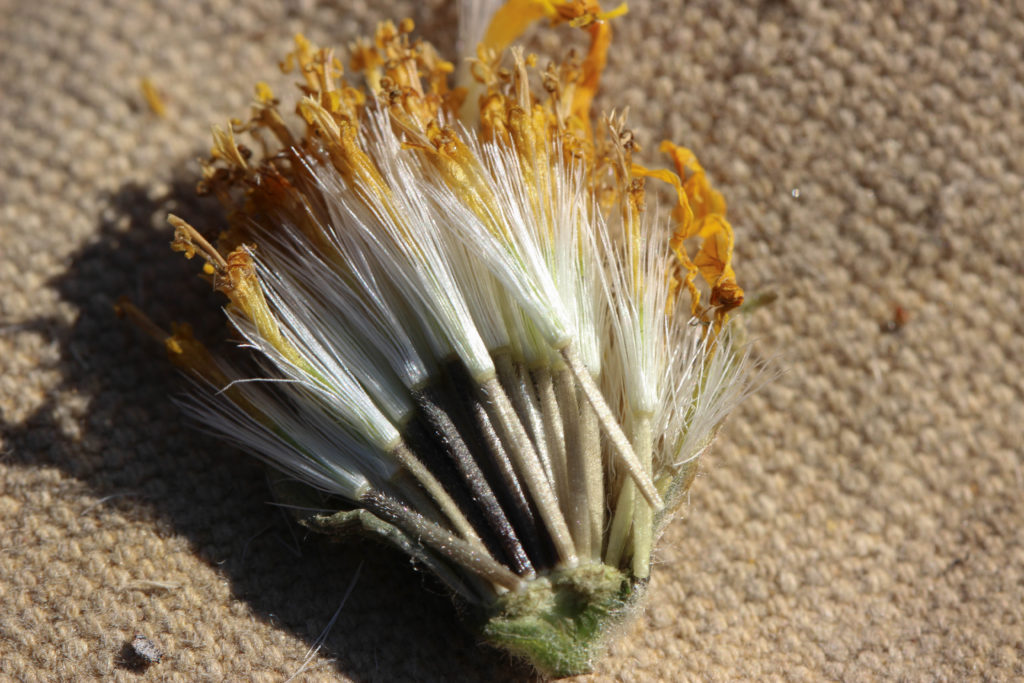
Arnica cordifolia in seed, note the dark to light gray seeds with the fuzzy pappus on top to help with seed dispersal.
Therapeutic Categories Combination
- Antiinflammatory
- Astringents
- Carrier
- Pain aids
- Trauma aids
- Vulnerary
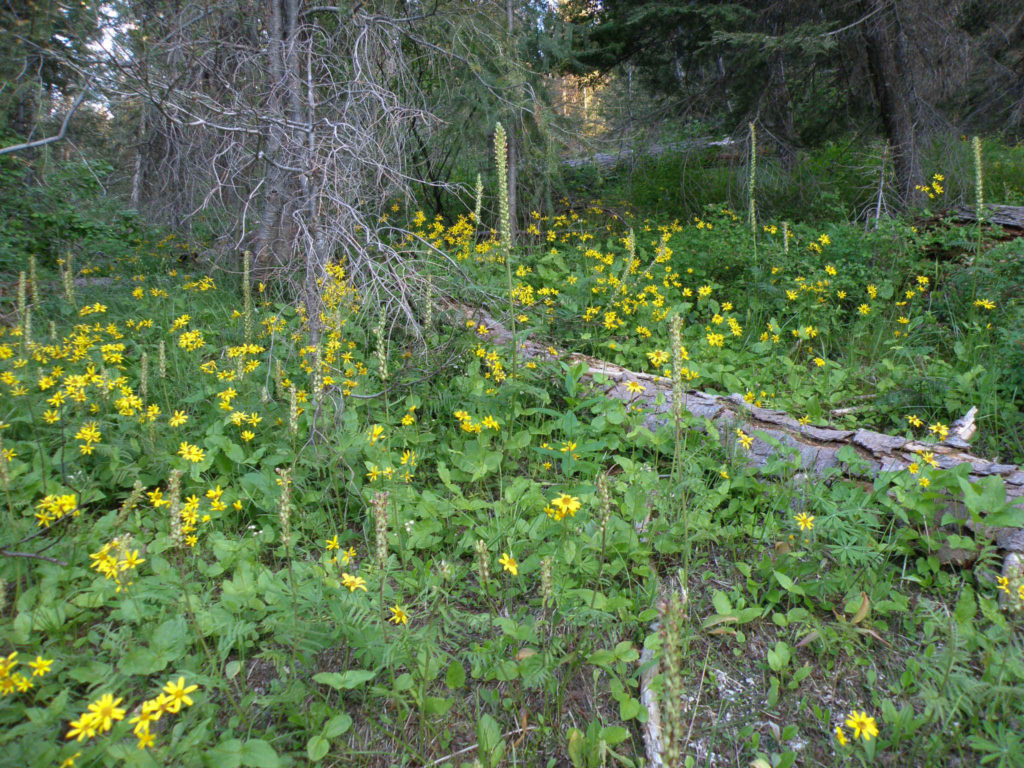
Plant Combinations
Antiinflammatory-reduce inflammation.
- Black birch
- Chamomile
- Ginger
- Licorice
- Turmeric
- Willow
- Wintergreen
Astringents-tighten tissue, decrease inflammation, and aid in wound recovery.
- Blackberry root
- Oak
- Rhatany
- Witch hazel
- Yerba mansa
Carrier-increases bioavailability of other herbs
- Cayenne
- Prickly ash
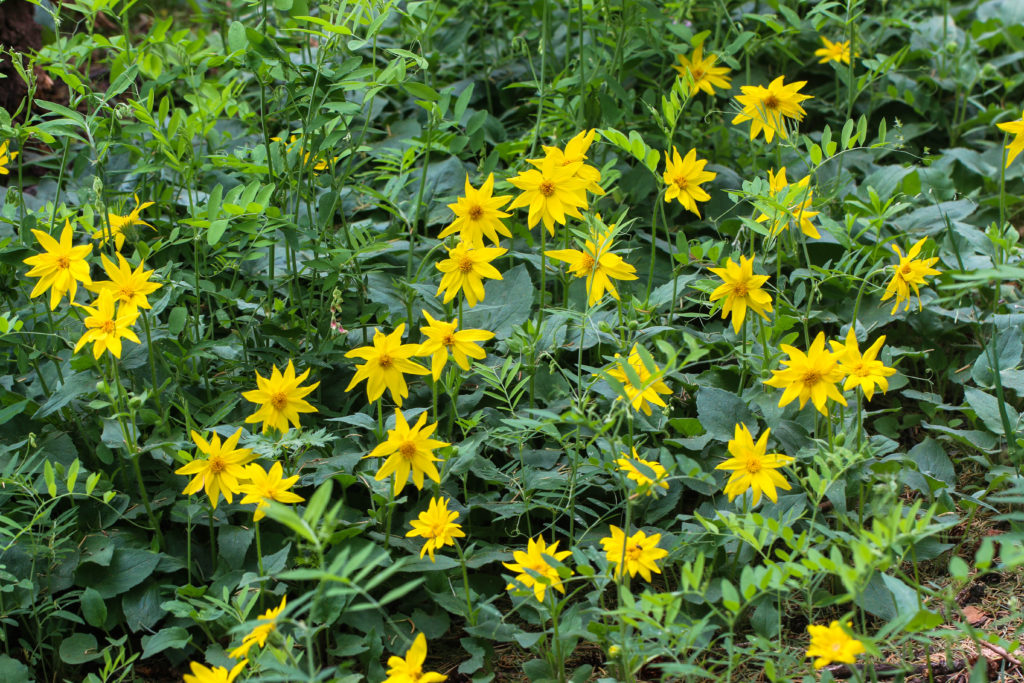
Pain aids-for pain associated with injury
- California poppy
- Cannabis
- Hops
- Jamaican dogwood
- Kava kava
- Lobelia
- Skullcap
- St. Johnswort
- Valerian
- Wild lettuce
Trauma aids-for panic or anxiety occurring from an injury
- Anemone
- California poppy
- Lobelia
- Rose
- St. Johnswort
Vulnerary-assist in wound recovery
- Aloe
- Arnica
- Calendula
- Chickweed
- Comfrey
- Plantain
- St. Johnswort
- Yarrow
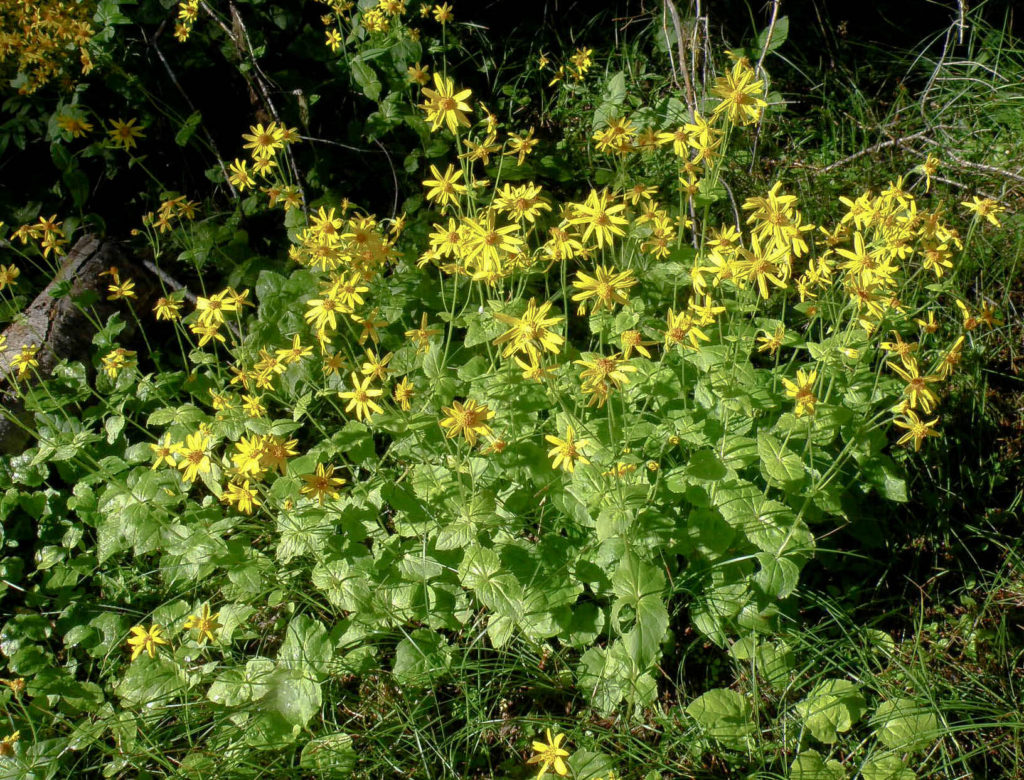
Dosage-Generalized Guidelines
External Application
After an acute injury, I initially apply Arnica liniment (or tincture). After 15 minutes or so, I then put Arnica infused oil over the same area. This combination allows quick absorption of the liniment and a more gradual absorption of the Arnica oil into the injured area.
Oil-based preparations can be applied continuously throughout the day for as long as needed. When applying any of these preparations, avoid putting them directly into an open wound. They can be applied on any unbroken tissue.
The liniment can also be applied continuously throughout the day if applied on a small to medium sized area such as a knee or ankle. But its use should be restricted if it is being applied to a large body area. For instance, if someone injured their back and the medicine was being applied all along the spine, it should be limited to 2 times a day to avoid absorbing too much isopropyl alcohol.
Internal Dosage
Please see the Safety Profile about the internal use of Arnica tincture. In general, 3-5 drops 3 times a day is considered a safe dose for about a week.
I do not know anyone who has had ill effects from taking the tincture, but this is partially due to not knowing that many people who use it internally.
I have heard stories of people who took too much Arnica internally (amount unspecified), and felt like they had gastritis. This uncomfortable feeling seems to last for a day or two and then dissipates with no apparent long-term adverse effects.
One way to limit how much Arnica tincture a patient will ingest is to give it to them diluted in a water bottle.
Since it is important for people to drink water, do not put the tincture in their personal water bottle. Instead, put the medicine in a disposable water bottle and then add the Arnica tincture. This is not the most environmentally friendly of techniques, but it makes taking their medicine safer.
Put about 18 drops (about 2/3 of a dropperful) of Arnica tincture into a 12 oz water bottle. This will provide 3 drops of Arnica tincture per mouthful. Here is the math. 1 large sip is approximately 2 oz, so there are 6 mouthfuls per 12 oz bottle. 18 drops ÷ 6 sips equal 3 drops per large sip. This is all relative to how much an individual swallows at a time, so this should be discussed with the patient, along with shaking the bottle before each drink.
Put a clear warning label on this bottle with implicit instructions to just take sips out of the bottle about every 3 hours. This method works well, as it maintains a low dosage that can be taken throughout the day.
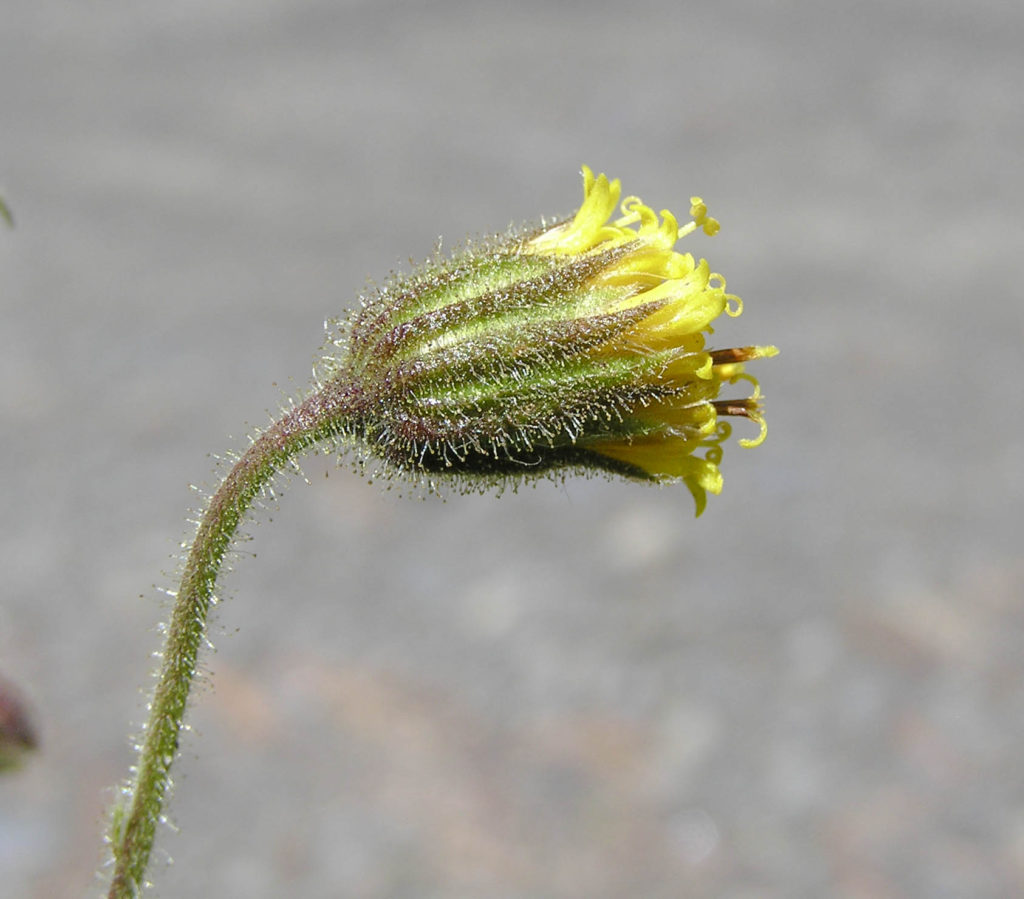
Noted Constituents
Sesquiterpene lactones are considered to be the main active constituents in Arnica.
Safety Profile
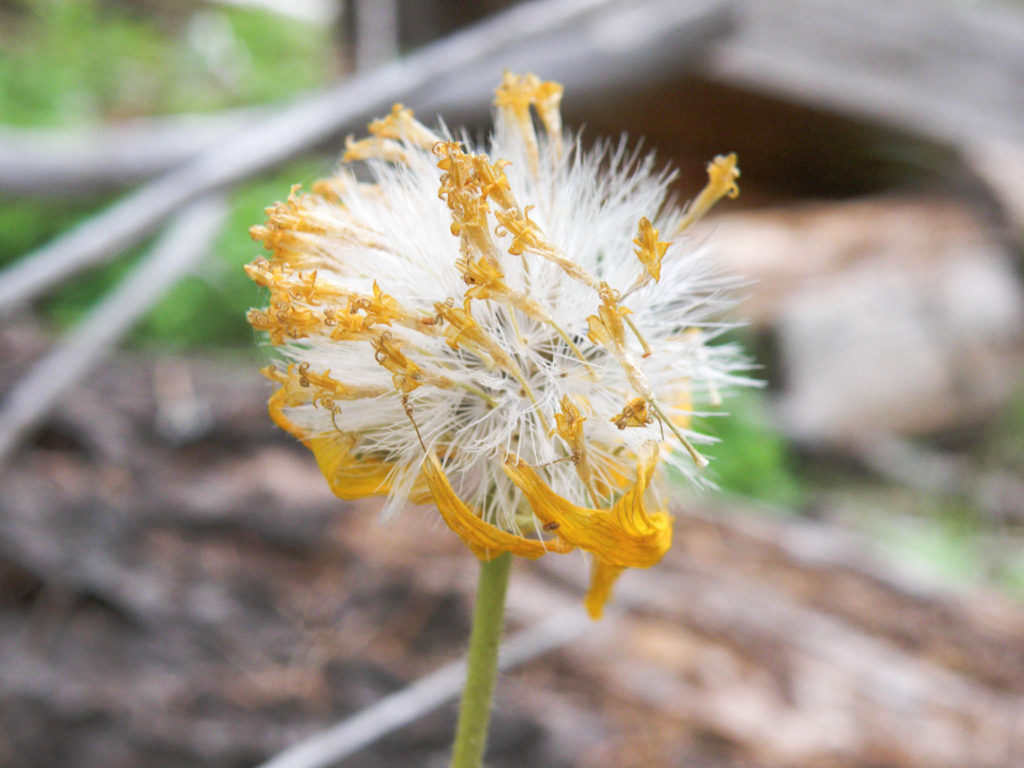
Arnica products are generally safely applied externally. I don’t think I have seen a rash caused by its topical application. It doesn’t seem impossible, but if it happens, it is uncommon.
The biggest safety questions about Arnica concern the internal use of the tincture. Arnica has historically been used internally, though this is not a common current practice. (Note, this is not about the internal use of homeopathic Arnica.) I use the tincture internally to initiate an antiinflammatory response. This is generally done in tandem while applying it externally.
There are a few adverse effects reports about its internal use, though they are inconsistent. It is hard to find any reasonably reliable research on the negative consequences of Arnica’s internal use. This doesn’t mean it doesn’t exist, it is just difficult to ascertain how much is needed to reach a dangerous level.
I am cautious about using Arnica internally. I give 3 drops, diluted in water, up to 5 times daily for about 1 week, depending on an individual’s size, constitution, and other personal factors. So far, I have not seen any negative effects at this level.
There is some concern about applying Arnica into open wounds as it may be absorbed in large enough quantities to cause a health issue.
It seems a substantial amount would need to be applied in a wound to create a problem. But to stay on the safe side, I avoid putting Arnica preparations directly into open skin.
Arnica can sometimes cause a burning sensation while it is being gathered. It feels like a rash, though there is only a slight reddening, if any at all. This reaction seems uncommon, but I am one of those people to whom it happens (see the story below). I have only heard of a few other people who also react this way. It usually occurs if I am gathering large amounts of the flowerheads and inadvertently use my hand to wipe the sweat off of my face. The rash is limited to my hands and face. The first few times it happened, I did not make the connection and just thought I might have gotten a sunburn. But I rarely sunburn and there was no redness, just a burning sensation. It took a few Arnica wildcrafting adventures before I realized this happens when I am gathering this plant. The burning sensation only lasts for about 1 hour and doesn’t seem to have any other impact, and my skin does not seem compromised in any way.
Patient Compliance
Patience compliance is generally very good with external Arnica applications.
The only problem may be with salves and oils for the same reason as all oily preparations, that they are messy and may stain clothing.
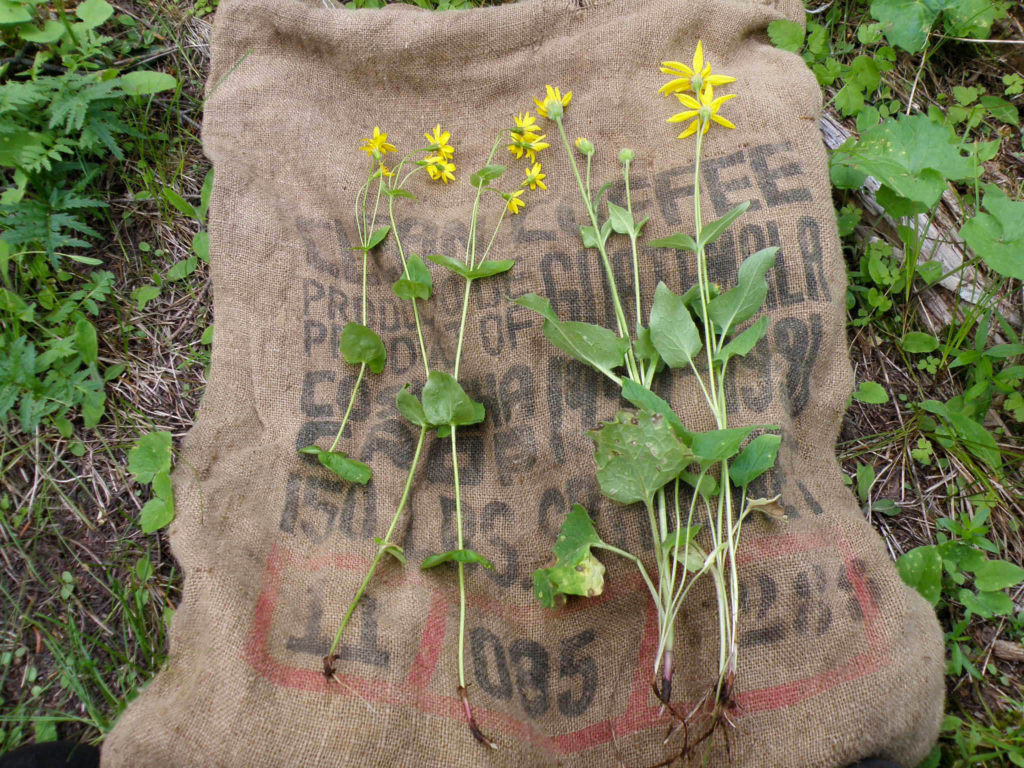
Stories and Anecdotes
That Arnica Rash
Many years ago, while gathering Arnica cordifolia flowers in Colorado, I realized that I was getting a burning sensation on my face and hands. It was warm and sunny outside, and I thought I might be getting sunburned. This felt odd, as I don’t sunburn easily, and I wear a hat to avoid flagrant sun exposure. After a while, I started wondering if it could possibly be due to rubbing the sweat off my face while gathering Arnica. I asked the other people I was with if it happened to any of them. No one else experienced this phenomenon, so I made a note about it and promptly forgot the incident.
A few years later, I was once again gathering Arnica flowers in the Rocky Mountains and noticed the same peculiar sunburn-y feeling on my face. I remembered that I received a similar uncomfortable sensation previously while gathering Arnica. And once again, I didn’t pay much attention to it but made a mental note to remember this occurrence.
Some years later, I was once again collecting Arnica and finally remembered this reaction before I started gathering. While I did have a couple of slip-ups (sweat in the eyes is annoying), I mostly avoided touching my face directly. I also learned not to use my shirt sleeve to wipe the sweat from my face as that could also create that burning sensation. I assume the compounds adhere to the clothing. And so, for once, I was mainly rash-free while gathering Arnica. Currently, as soon as I start to gather Arnica, I remember to use a cloth or some other method of avoiding touching my face. I occasionally get the sensation on my hands, but it is not bad enough to warrant me wearing gloves (I would miss touching the plants).
This problem does not affect me at all when I use Arnica products topically. It seems like it is the fresh constituent that causes this effect.
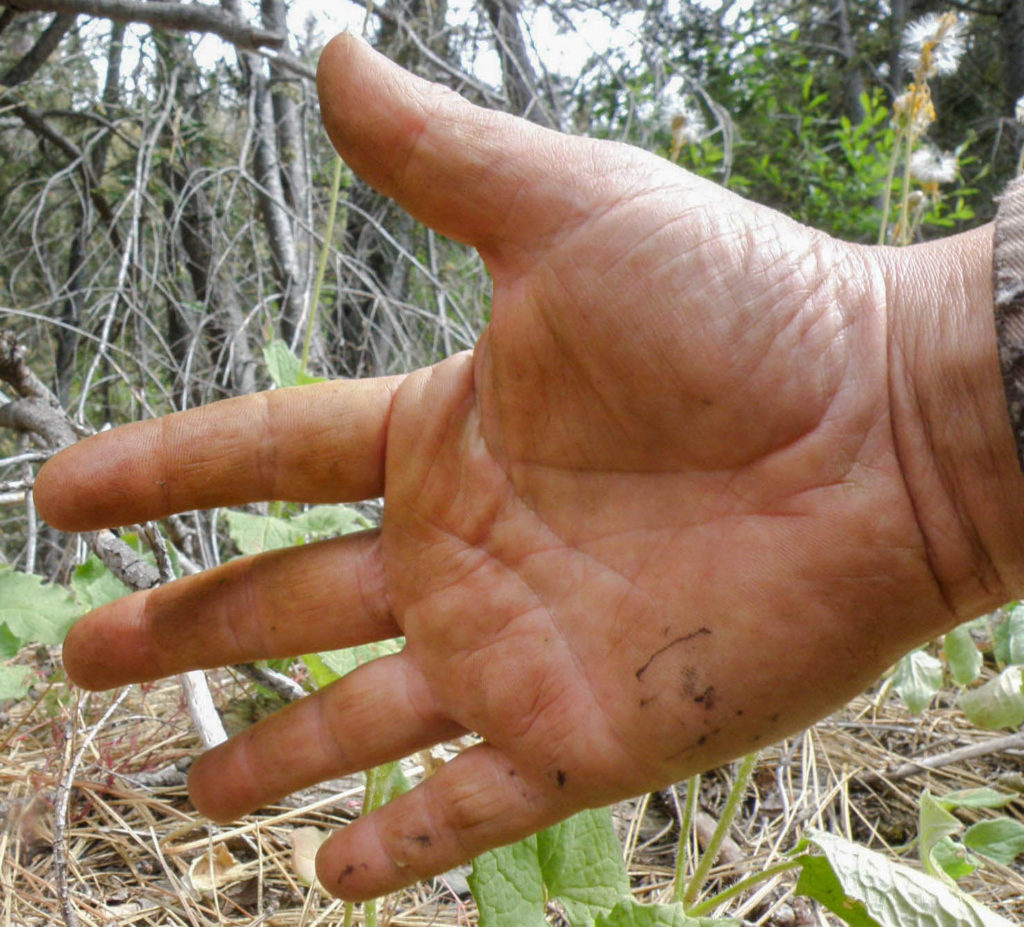
A Michael Moore Arnica Story
Michael Moore was a very important herbalist teacher to me (see Bio). This is a story as told by his partner Donna Chesner as recounted by Michael.
“In Cochise County in the 1980s, driving late at night, Michael hit the sheriff’s prize bull. The steering wheel mashed into his side. He ate what was left of a partially used jar of arnica salve. (Arnica cordifolia dried flowers and upper leaves, alcohol intermediate method). He went to the hospital briefly, and then recovered on his own. He gave the Arnica a great deal of credit in the limiting of potential tissue damage he might have otherwise suffered. For the rest of his life, he had a cold area on his left torso, where some damage was obviously permanent, but that’s the only lasting effect I know of.”
I really like this story as it displays Michael’s inventiveness and ingenuity in using what he had on hand.

An Arnica Non-Story
It would be exciting to tell an extravagant tale of how Arnica quickly healed an individual, who later that day (due to the healing power of Arnica), was able to rescue a box full of kittens from a tragic fate.
Unfortunately (for the story’s sake), Arnica is often used right after an injury occurs, so it can be challenging to ascertain how definitively it works.
While I cannot pin down a specific story, I have heard from many people how Arnica has helped them recover much more quickly from a bad injury or fall. In these instances, they felt that they would have sustained more serious harm and that the damage would have been more long-lasting.
It is difficult to know how much this type of prevention helps (‘correlation cannot confirm causation’). But from personal observation and a multitude of reliable stories, I feel that Arnica is a first-line, first aid antiinflammatory herb.
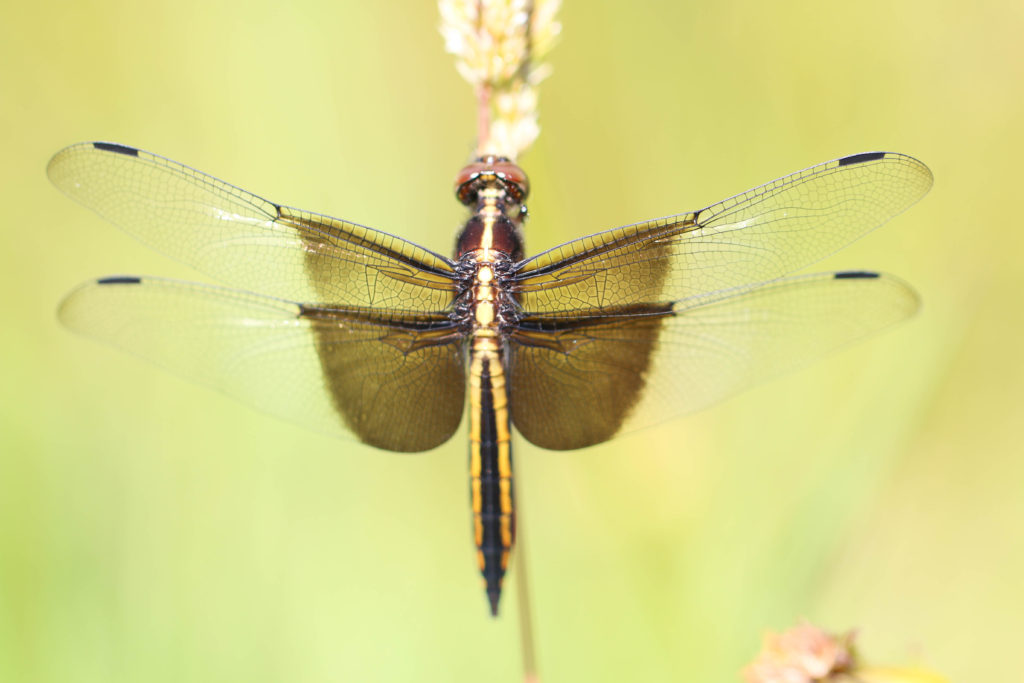
Arnica Monograph Handout
If you would like to download this Arnica monograph as a pdf, you can find it here
